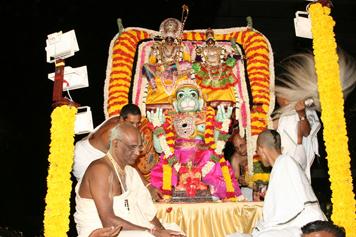
ISKCON Bangalore, April 7 — If one goes to the hill shrine of Tirumala where the Deity of Lord Venkateshwara is worshipped with grandeur, during the months of October or November, he will be pleased to participate in a grand festival. Lord Venkateshwara is carried on a beautiful vahana, swinging to and fro in a rhythmic fashion, celebrating His advent into this world in the archa vigraha (Deity) form, in the colourful and sublime festival known as Brahmotsava.
Whatever we see, hear or know of, in this world, can be described by the Sanskrit letters starting with a and ending with ksha, but the Supreme Personality of Godhead is indescribable by the words which are formed from the letters starting from a and ending with ksha, and therefore He is called Adhokshaja (one who cannot be described by words). But from time to time the Lord descends into this material world in different forms. One such form is His Deity, also known as the archa-bigraha.
Out of His causeless mercy, the Supreme Personality of Godhead presents Himself before us so that we can see Him. Since we have no transcendental vision, we cannot see the spiritual sac-cid ananda vigraha of the Lord; therefore, out of His causeless mercy He comes in a form we can see. We can only se material things like stone and wood, and thus accepts our service in the temple. This is an exhibition of His causeless mercy.
The post box is constructed in a particular way, and anybody who posts his letter in it, will find that it reaches the person whom he intended it for. The post box acts as a representative of the whole postal department and delivers out message to our friend or relative. Similarly, the Deity form of the Lord receives our service, representing completely, the Supreme Lord, who, in our present material condition, is not visible to us.
The Deity of the Lord is made of either metal, stone, wood, etc. and should be sculpted according to specifications given in the Vedic literatures. After it is ready, the Lord is invited to come and reside in the Deity form by an elaborate ceremony known as pranaprathista.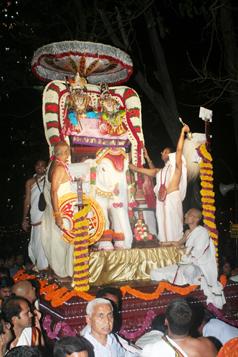
The Brahmotsava is usually celebrated every year, either on the day of the pranaprathista of the Deity, or on the day of the advent of the Lord into this material world. Sarvam khalv idam brahma, the whole cosmic manifestation is pervaded by brahman. The Narayana Upanishad states narayana evedagum sarvam, meaning that Lord narayana is everything.
The same Upanishad also states that brahma narayanah, thus the word brahma is used here to mean Narayana. Thus brahmotasava can be taken to mean a festival for celebrating Lord Narayana’s advent in the form of His Deity of His personal form. Usually, in temples all in South India, this festival is celebrated on the pranaprathista day of the Deity. In many temples, including the famous temple of Lord Venkateshwara in Tirumala, it is the main festival of the year.
The Brahmotsava usually lasts either seven or nine days, reaching a grand finale on the anniversary of the pranaprathista of the Deity On the ninth day there is a festival called brahmarathotsava.
According to pancaratrika and vaikhanasa agamas, the festival starts with a dwajarohana, during which the Lord is invoked on the dwaja stambha (a tall metal or stone flag-like ornate structure constructed in most Indian temples) of the temple.
At this time all the demigods are invited into the premises of the temple so that they can participate in the wonderful festival. This is exactly like the king inviting all his senior ministers and assistants in the time of celebration of a major event in the capital, for the Deity of the Lord is considered as the real proprietor of the whole temple. Infact there were instances in which kings made the Deity as the real proprietor and ruler of his entire kingdom.
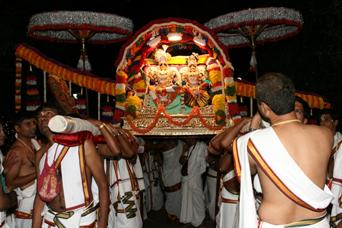
The morning festivities everyday consist of shringara arathi (greeting the Lord after He is dressed up in fresh garments and ornaments), yajna or homa (sacrifice), and pallaki utsava (the Deities are carried on a palanquin accompanied by kirtana). In the evening the Lord is carried on His different vahanas, (the carriers of the Lord) Each incarnation of the Lord has His own specific carrier; Lord Vishnu is carried by Garuda, Kalki is carried by a white horse etc.
The Deity is usually carried within the temple’s premises on all days, except the brahmarathotsava day. The evening programme concludes with a shayanotsava during which the Lord is put to rest by His devotees.
On the concluding day, the Lord travels out of the temple on a specially made chariot or ratha. The ratha of the Lord is usually pulled by the devotees themselves. The residents of the city wait for the Lord with offerings of flowers, fruits, incense and camphor. This traveling out of the Deity has its historical precedence in the pastime of Lord Ramachandra.
Lord Ramachandra was the prince of the Kosala province, with its capital at Ayodhya. The citizens of Ayodhya were so much in love with Lord that they would wait for Him to come out on His evening strolls during which He would greet them and enquire about out their welfare.
The Ramayana describes the scene: icchamo his mahabahun raghuviram hi maha balam gajena mahata yantam ramam chatravatanam. The Lord would be seated on His head. It is said that on seeing this, Dasharatha, the aged father of Rama, would feel as if he had regained his youth.
The following verse describes the mood of Dasharatha very aptly: aham punar deva kumara rupam alankrutam sutam avrajantam nanadami pashyam api darshanena bhavami drushtva ca punar yuveva. The devotees enjoyed seeing the wonderful bodily features of the Lord.
Some of them enjoyed seeing His wonderful arms, some His broad chest, some His lotus like face, and thus each devotee was merged in an ocean of ecstasy. Some enjoyed seeing the charming gait of the Lord. The brahmarathothsava depicts this scene, which happened in the kingdom of Lord Rama many thousands of years ago.
The festival ends with a dwaja avarohana ceremony, in which the various demigods, who had been invited, are sent back to their various planets. The festivities conclude with a shayanotsava, the festival of putting the Lord to rest.
The Brahmotsava festivities at ISKCON Bangalore will start on 15th April and will end on 27th April with a grand brahmarathotsava. All devotees are invited to come and participate in the festival, the details of which will be published in the next issue.
Click here to know more about Sri Brahmotsava – 2011


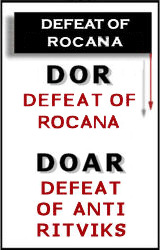
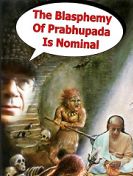
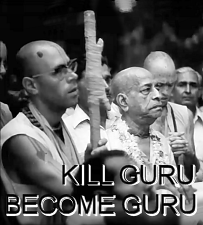
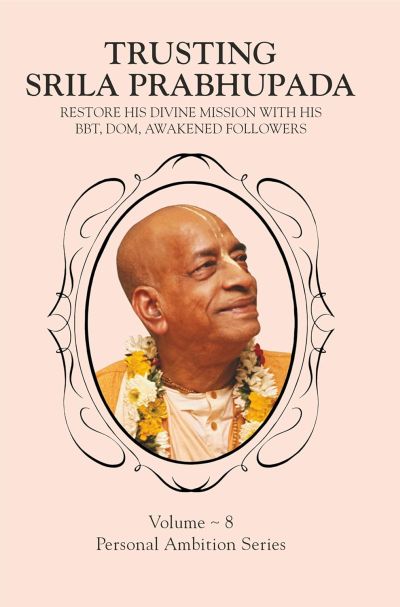

Speak Your Mind